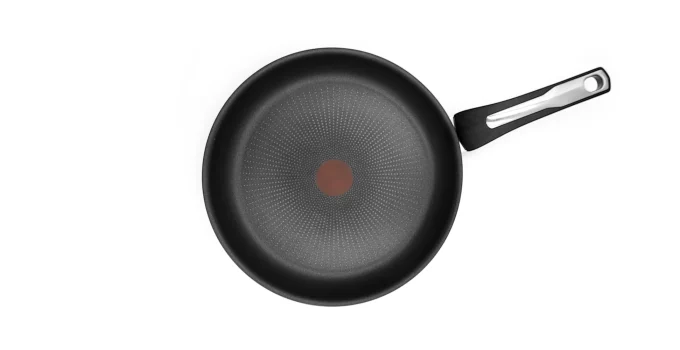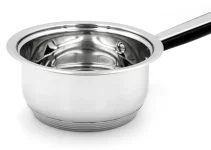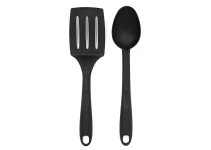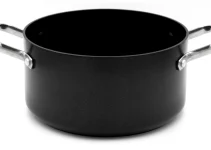Some would say that cooking a juicy steak is an art and, if that’s so, then we need the right tools for this particular art form and that means looking for the best pan to cook steak.
I would also mention that the quality of the meat we buy is even more important than the pan we’re cooking it in. But that part is up to you entirely. I can only talk about the best pans we can use for cooking steak that everyone would worship.
Best Pans to Cook Steak Reviews
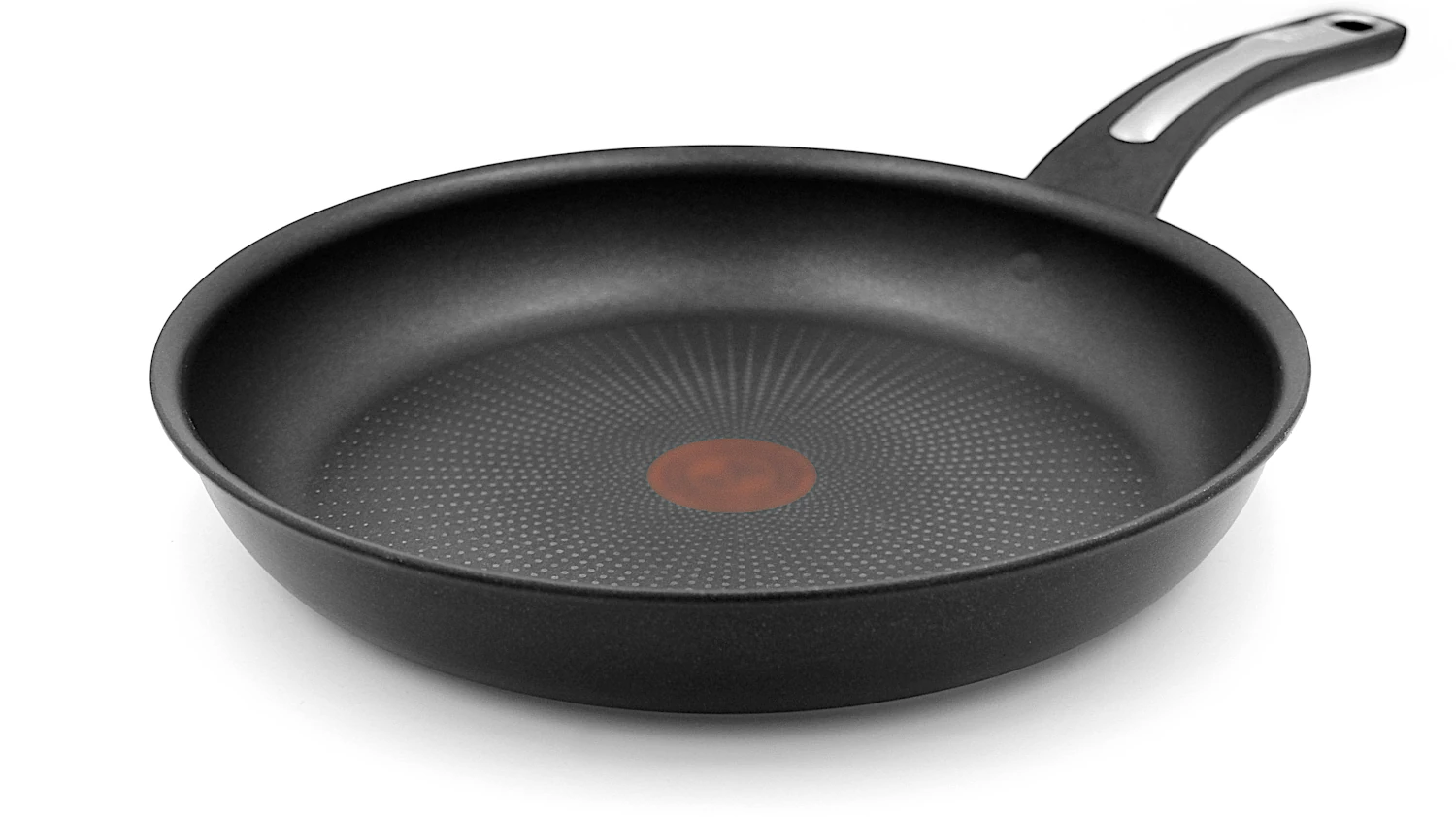
In my mind, there is one important question that we’re going to answer throughout this article: should we buy a cast iron pan or something else?
As you can see, that’s how I divide my pans for cooking steak: cast iron and something else.
Of course, I must also consider that professional chefs also prefer carbon steel pans. And they also use aluminum and stainless steel cookware.
But we’re not chefs. We’re amateur cooks with different needs and expectations.
For example, some of you might not even like the idea of cast iron because you don’t care about the seasoning part of it.
In that case, you might want a nonstick pan to cook steak in because it’s easy to use, to clean, and requires no maintenance.
Also, since we’re amateur cooks, most of us are going to have limited budgets. I will also consider that aspect when writing my reviews. Although, I’m also going to review a couple more expensive options for those who are willing to spend more.
Thus, I hope to find some of the best pans to cook steak to cover all needs, expectations, and budgets. Or to at least offer you a good start.
1. Lodge Pre-Seasoned Skillet: Overall the Best Pan to Cook Steak
The first thing you should pay attention to is the fact that there are a lot of sizes to choose from: 3, 6.5, 8, 9, 10.25, 12, 13.25, and 15 inches.
The 15 inches might sound like a good size for bigger families and it can be. However, before ordering it, make sure that it will fit on your stovetop.
If you’re cooking for 1 or 2, I recommend the 10.25 inch one or maybe even the 9 inch size.
If you’re cooking for 3 or more, I would pick the 12 inch or higher.
Features
If you’re looking to buy the best pan to cook steak perfectly every time, then I recommend the Lodge Pre-Seasoned Skillet.
It’s also very affordable. I don’t think we could get better prices for this level of quality.
Skip this option if you don’t like cast iron at all.
Lodge promises to offer unparalleled heat retention and even heating. I can agree with that.
We can use it to sauté, bake, broil, braise, fry or grill. It can also be used in the oven, on the stovetop, on the grill or over a campfire.
It is preseasoned with 100% natural vegetable oil. But there are a few people who complain that it’s not done very well. You can season it well before using it for the first time.
Cast iron skillets can be washed with a bit of soap and warm water. Just make sure to completely dry it after washing it to avoid rust. I also wrote a quick guide on how to clean a cast iron pan if food is stuck on the bottom.
It’s also induction stovetop compatible.
2. Le Creuset Enameled Cast Iron Skillet
Have you ever wanted to spend around $200 on the best pan to cook steak in? If that’s exactly what you were looking for, Le Creuset certainly has you covered.
Is it worth it? Even at this price, there are plenty of negative reviews to read so make sure that you take the time to do just that.
Let’s see what we get from the most expensive skillet among my recommendations.
Features
We have 4 sizes to choose from: 6.33, 9, 10.25, and 11.75 inches.
First of all, I want to make something clear: this is not a non-stick pan. The manufacturer doesn’t mention anywhere that it’s non-stick.
If you have a Dutch oven that is enameled coated, you know exactly what this skillet offers.
Thus, the Le Creuset Enameled Cast Iron Skillet is enameled cast iron.
It doesn’t make it non-stick. It just means that the cast iron is coated in enamel, which means that you don’t have to season it at all.
You receive it, clean it with warm water and a bit of soap and it’s ready to go. There’s also no risk of rust.
The enamel resists dulling, staining, chipping and cracking.
It’s also compatible with all cooktops and oven-safe up to 500 degrees F.
You can wash it in the dishwasher but I recommend washing it by hand if you can.
It’s also mentioned that we can use metal utensils. I know that this is a non-stick coating but I would still choose to use wooden or silicone cooking utensils.
There are also a bunch of colors we can choose from for the exterior. That’s not something we come across often when we’re shopping for skillets.
Overall, the Le Creuset Enameled Cast Iron Skillet has all the properties of a cast iron, which makes it the best option to cook steak, but without the need for seasoning thanks to the enamel coating.
It’s not non-stick, which means that we can sear our steaks and lock in the juices just like we do in a cast iron that doesn’t have an enamel coating. It has the same heat retention and heat distribution.
3. de Buyer Mineral B Frying Pan Carbon and Stainless Steel
If we compare this de Buyer skillet with the above Le Creuset, then we might say that the one from de Buyer is quite affordable.
On the other hand, if we compare it with the Lodge skillet, then we would call it expensive.
It’s also among the few carbon steel skillets that I really like.
When you decide on cast iron, the choice is pretty easy to make because Lodge is the most popular option. That’s not the case with carbon steel. There are a lot of manufacturers, there are pretty high prices for them all, and there are a lot of negative reviews in all cases.
Make sure to read a few of those negative reviews because this de Buyer Mineral B Frying Pan has received plenty.
Features
There are 6 sizes to choose from: 8, 9.5, 10.25, 11, 12.5, and 14 inches.
The pan is 99% iron and 1% carbon. It is a thick, heavy-duty material that is really good for cooking steak the way we like it.
It is slippery with better sear without any synthetic coating.
Just like it’s the case with cast iron, the nonstick ability is only gained in time with repeated seasoning.
Thus, if you buy this carbon steel skillet, you’re not going to escape seasoning.
The manufacturer offers seasoning care instructions.
It’s compatible with all cooking surfaces.
4. OXO Good Grips Frying Pan Nonstick
I know that nonstick pans are not my favorite when it comes to cooking steak but they might be exactly what you’re looking for.
I totally get the appeal of nonstick pans and I use a few of them myself for eggs, omelets, crepes, and other dishes. Of course, you can also extend the use to cooking steaks.
If you choose a nonstick skillet, you don’t have to worry about seasoning, washing and drying immediately after, and things like that.
They’re easy to use, easy to clean, and easy to cook with.
Features
The nonstick skillets from OXO are certainly not the cheapest but I think they’re some of the best pans to cook steak.
There are 3 sizes to choose from: 8, 10, and 12 inches.
It claims to be America’s Test Kitchen highest rated nonstick skillet.
It has a durable, hard anodized body that delivers excellent heat conduction and scratch resistance.
The nonstick coating is PFOA-free but there’s no mention of it being PTFE-free. It’s a three layer, PFOA free, German engineered nonstick coating.
The stainless steel handle is clad with stay cool, non slip silicone.
It is oven safe up to 390 degrees F.
Only wash it by hand.
Also, it’s not induction compatible but it works on all other cooking surfaces.
5. Tramontina Fry Pan
This is the slightly cheaper alternative to the OXO Good Grips Frying Pan Nonstick.
They have a lot in common, the main difference being that Tramontina is slightly cheaper. But I still prefer OXO.
We get an aluminum body with a PFOA-free nonstick coating.
There are 4 sizes to choose from: 8, 10, 12, and 14 inches.
It’s dishwasher safe, though I recommend washing it by hand.
And, just like OXO, it’s not induction compatible.
It is oven safe up to 400 degrees F.
Best Pan to Cook Steak Buying Guide
When we look for pans to cook steak, the focus is on the material from which the pan should be made of.
There are 3 main categories: cast iron, carbon steel, and nonstick pans.
The other thing you must pay attention to is the size of the skillet. 10-inch or 12-inch skillets are the most numerous.
You could handle cooking two steaks in a 10-inch pan but I recommend getting the 12-inch size to comfortably fit two bigger ones.
If you’re cooking for 4 people with healthy appetites and you want to serve everyone at the same time, you’ll need to fire up two 10-inch skillets side by side. But you might be able to fit the steaks in a 12 inch pan, depending on the meat’s size.
A 10.5-inch square grill pan will easily fit 2 very big steaks. These can feed 2 to 4 people, depending on how much you eat.
Cast Iron
My preference for cast iron is due to a few very important factors.
It’s the material we can expect to last a lifetime and longer. These skillets are also some of the most affordable we could buy.
Cast iron is also perfect for cooking steak, especially for frying steak, because it has impressive heat retention.
It’s not perfect when it comes to heat distribution but you can learn to deal with that. I would say that it has acceptable heat distribution.
The highest heat will be retained by the surface that is covered by the burner.
The peripheries will not get just as hot but they will be hot enough, especially if you preheat your cast iron skillet properly. Don’t rush it.
You should preheat your cast iron skillet over high heat for about 5 minutes, until a bit of smoke is seen coming out from the bottom. Only then you can proceed with cooking your steak.
All these factors contribute to making cast iron my overall favorite when it comes to pans for steak.
Carbon steel
Carbon steel is a second favorite because it has a lot of things in common with cast iron, like durability, impressive heat retention and versatility.
Moreover, carbon steel pans can be regarded as easier to use, they’re lighter and smoother and easier to care for and cook with.
On the other hand, I saw plenty of carbon steel pans where people mentioned seasoning that is done in complicated steps, etc. Personally, I wouldn’t say that carbon steel skillets are easier to care for, although that seems to be what others believe.
Even so, overlooking the fact that caring for carbon steel is not that easy, the main thing that keeps me from choosing carbon steel as my favorite are the higher prices.
If the prices are no problem for you and you’re looking for the best pan to cook steak in that isn’t made of cast iron, carbon steel should be at the top of your list.
Carbon steel pans are also preheated over high heat for about as long as cast iron skillets.
Nonstick pans
Can we fry steak in a nonstick pan? We can but cast iron or carbon steel are the two favorite materials.
The reason is simple: we can preheat these pans made of cast iron or carbon steel over high heat until the pan is super-hot.
That allows us to get the right sear to lock in the juicy flavor.
Nonstick pans are also preheated before cooking a steak. While cast iron and carbon steel is preheated over high heats, nonstick pans are preheated over medium heat.
Nonstick pans also have temperature limits so you must pay attention to that, too.
Heating a nonstick pan over high heat until it gets smoking hot can ruin the coating and the steak.
I wouldn’t recommend teflon coatings necessarily, but ceramic coated pans can work decently.
Still, keep in mind that this is the least popular option if you really care about perfect steak, restaurant-level quality.
Steak Cooking Techniques
If you’re interested in discovering the best cut of steak, check out this article because they do it pretty well.
Now that we’ve done covering the best pans to cook steak in, I want to talk a bit about cooking techniques.
The main cooking techniques for steak are:
- Frying – tender cuts are friend in oil or butter in a heavy, hot skillet
- Roasting – used for cooking tender roasts of meat, the roast is cooked in a hot oven, basting as often as possible with the fat that renders out of it
- Slow roast – for not so tender cuts that can’t be roasted normally, the difference between roasting and slow roast is that the oven temp is lower and more time is needed
- Broiling – an alternative to frying, the meat is sealed under high heat and cooked through under lower heat
- Poaching – tender cuts of meat poached in stock or wine, similar to how we poach fish
- Stewing – perfect for tough cuts (shoulder, shank, brisket), the meat is cooked in the oven or on the stove with vegetables, herbs, spices, and with either stock, wine, beer or water
How long we cook our steak depends on how we like it: extra rare, rare, medium rare, medium, and well done.
All in all, choosing the best pan to cook steak in is important but there are also other things we must pay attention to: choosing the right cut, mastering different techniques, etc.

